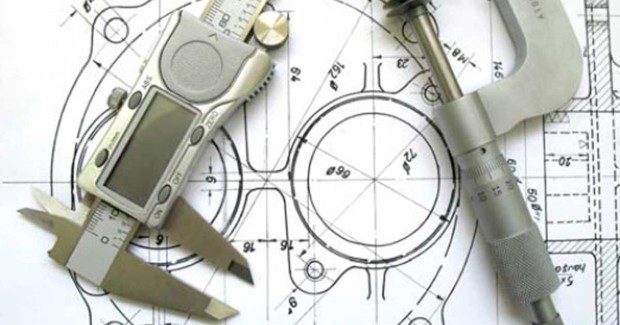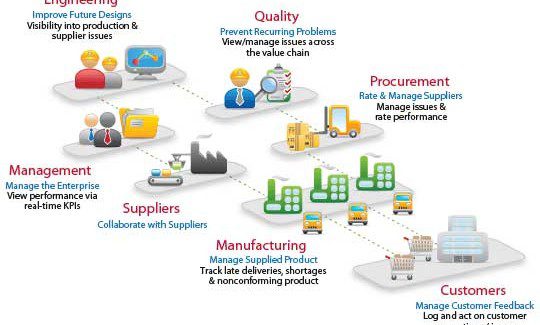Before Investing in Quality Management Solutions, Know Thyself
Every shop should develop a high-level understanding of their existing quality resources so they can begin creating flow charts for each quality process that, in turn, will help them understand not only a breakdown of what takes place within a specific process, but also the resources allocated to each step along with any potential gaps that may exist.
Posted: October 30, 2013
Job shops, metal service centers and contract manufacturers all have to deal with two major challenges, among many other interconnected ones.
One is a global economy that is becoming so increasingly competitive that it can often be difficult to manage operating margins, reliance on the supply chain, operational risk, and the ability to meet compliance. The other is a demanding marketplace where products and the processes required to make them are becoming ever more complex.
Because of these burdens, nearly every global manufacturer is being prompted to at least consider an investment in enterprise quality management software (EQMS). For this reason the EQMS space is maturing rapidly, with many enterprise software providers now offering different quality functionalities and another large group that now specializes in the specific delivery of nothing else but EQMS.
All of this means that, before a shop considers which of these vendors to choose, they must first do lot of work in assessing their current capabilities, documenting their ideal capabilities, estimating the impact of EQMS on their business operations, and leveraging their existing industry knowledge to validate their business case.
This article examines one part of the work required to build a business case for EQMS: how any shop can verify and analyze their own understanding of their current quality capabilities across people, processes, and technology.
Regardless of whether your shop is actually planning an investment or not, documenting this information can be valuable as you move forward in the quality journey.
DOCUMENTING CURRENT QUALITY PROCESSES AND PERFORMANCE
Long before requesting a budget for an EQMS purchase, a good starting point is always to develop a high-level understanding of your existing quality resources.
Down the road you can use this information to get much more specific by creating flow charts for each quality process that, in turn, will help you understand not only a breakdown of what takes place within a specific process, but also the resources allocated to each step along with any potential gaps that may exist.
To get a comprehensive assessment of current capabilities, you’re going to want to do the following things:
1. Detail an overview of key personnel and quality structure
Are your quality responsibilities centralized, decentralized, or carried out via a hybrid model? Document how quality is dealt with at your corporate, divisional and site levels, and who the sponsors are that need to get on board. Remember that quality is as much of a people issue as it is a process and technology one.
2. Assess current processes in place for managing quality
Quality management processes should also be broken down by corporate, divisional, and site levels. If you operate plants in different places throughout the world, many varied quality processes likely exist across respective regions and sites. The same can be said for a small shop that has grown organically by building homegrown processes or implementing point solutions along the way. Regardless, take an inventory of each of these processes, their effectiveness and how they are actually used. You also want to know which ones have been standardized across the enterprise and which are site-specific.
3. Document current quality software and technologies
Obtain a complete understanding of your current quality IT architecture, from corporate systems used by executives and continuous improvement professionals to those used on the shop floor and to manage supplier quality. Again, you want to know what technologies are being used, their effectiveness, how they are used and whether any have been rolled out as a company standard.
4. Investigate current quality metrics measured
Find out which quality metrics are being used, at which level of the organization, and current performance. A vital focus here is to identify any disparities from corporate to site level on how each metric is calculated, because this can impair your ability to benchmark performance down the road and justify your investment in EQMS.
ATTAINING QUALITY INTELLIGENCE: DON’T DO IT ALONE!
The most effective method for gathering this information is to leverage the knowledge of employees across the value chain. Interview personnel from engineering, quality, manufacturing, supply chain and so on to assemble a solid foundation of what is currently available to manage quality and how it is being utilized.
Opening this line of communication and fostering buy-in from key people will help develop a user requirement document down the road and build the proper support when the time comes for implementation.
Take this a step further by identifying and inviting key players in each area of the value chain to join a quality leadership council. This type of cross-functional team holds much more weight than any one individual when making a budget request for quality software.
By stating a business case from the perspective leaders of supply chain design and service, the chance for approval only increases.

















